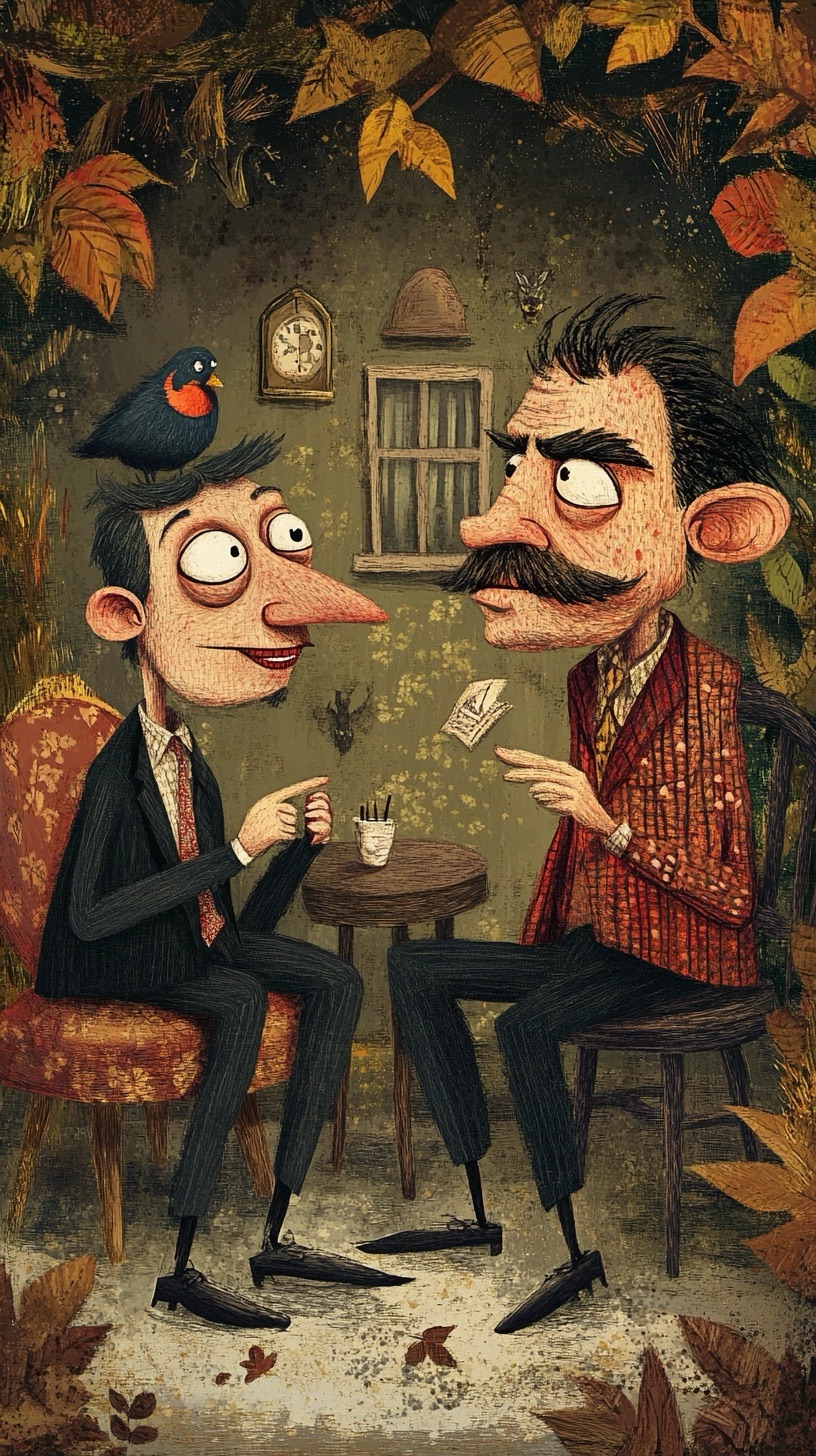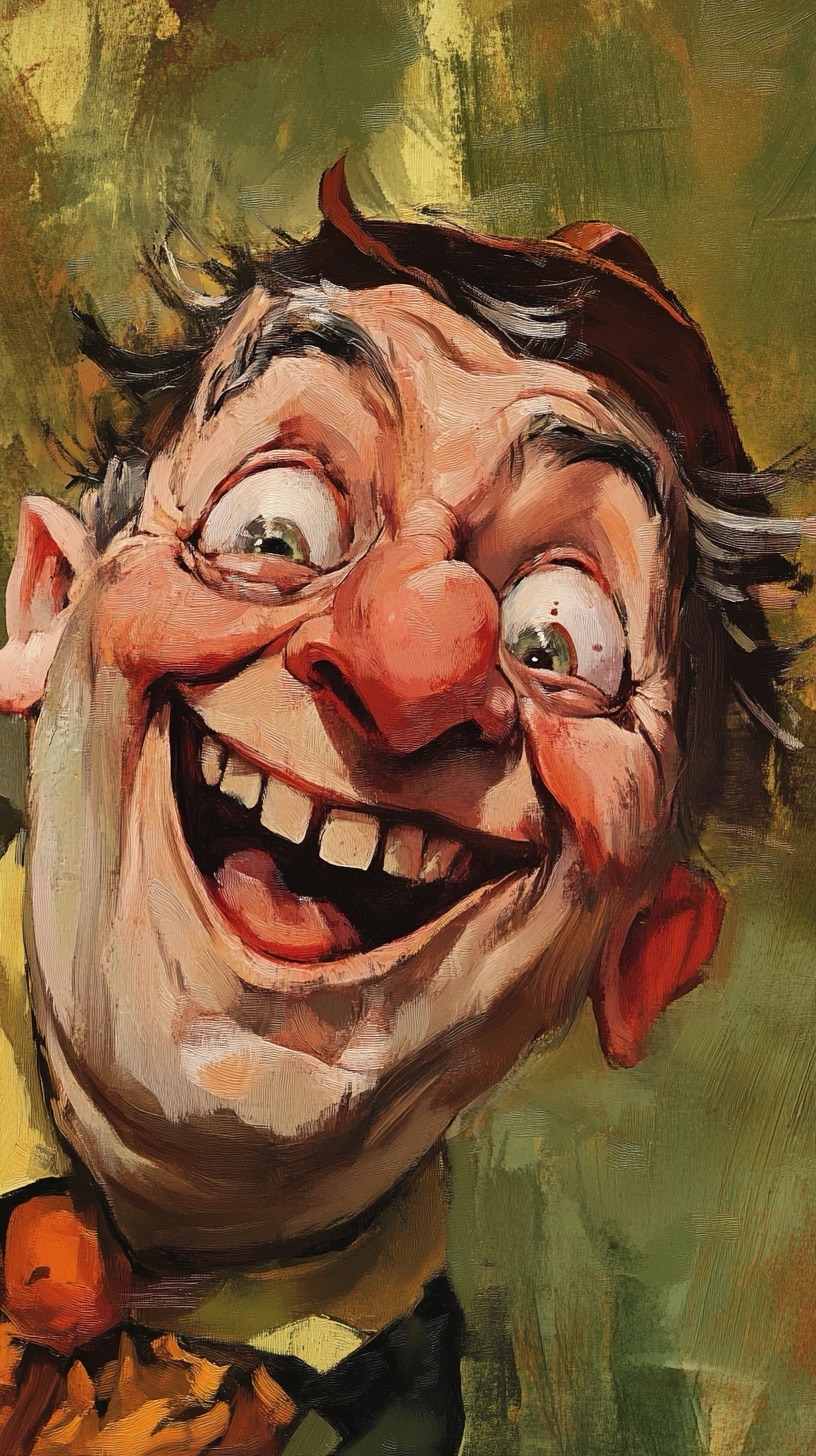
Storytelling is an ancient art, a practice that has been with humanity since the dawn of language. From cave paintings to epic poems, from Shakespearean plays to modern cinema, the essence of storytelling has remained the same: to connect, to convey, and to entertain. Yet, in the vast and varied toolkit of a storyteller, few tools are as versatile and potent as humor and wit. But how exactly do these elements enhance storytelling? And why are they so effective?
The Multifaceted Role of Humor in Storytelling
Humor in storytelling is far more than just a vehicle for laughter. At its core, humor serves as a bridge between the storyteller and the audience, creating a bond that goes beyond mere words. It is an invitation to share a moment of levity, to engage in a shared understanding that transcends cultural and social barriers.
Humor as a Relational Tool
One of the primary functions of humor in storytelling is its ability to establish and strengthen relationships. When a storyteller employs humor effectively, it creates a sense of camaraderie, a feeling of “we’re in this together.” This connection is crucial in storytelling because it fosters a sense of trust and relatability. When an audience laughs, they are, in a way, signaling their agreement, their understanding, or even their vulnerability. It’s a subtle acknowledgment that they see the world, even momentarily, through the same lens as the storyteller.
Moreover, humor can act as a social lubricant, breaking down walls and easing tensions. In narratives where the subject matter is heavy or complex, a well-placed joke can provide much-needed relief, allowing the audience to process information more easily. This balance between light and dark, serious and funny, is where humor’s true power lies. It creates a rhythm within the story, a natural ebb and flow that keeps the audience engaged.

Humor as a Cognitive Tool
Beyond its relational benefits, humor also plays a significant role in how we process information. Cognitive scientists have long studied the impact of humor on memory and learning, with numerous studies suggesting that information presented humorously is more likely to be remembered. This phenomenon, often referred to as the humor effect, can be a powerful tool in storytelling.
When a story incorporates humor, it activates different areas of the brain, making the content more engaging and memorable. This is particularly useful in storytelling that aims to educate or inform. For example, many of Aesop’s fables, while humorous, also carry important moral lessons. The humor not only makes the stories enjoyable but also ensures that the underlying message sticks.
Furthermore, humor can act as a cognitive reset. After being presented with complex or emotionally charged content, a humorous interlude can give the audience’s brain a brief respite, allowing them to better absorb and reflect on the story’s key points. This makes the overall narrative more effective and impactful.

The Art of Wit: More Than Just Cleverness
While humor is broad and often accessible, wit requires a sharper, more refined touch. Wit is the art of making intelligent, quick remarks that often involve a twist of meaning or an unexpected connection. It’s a form of humor, but one that demands a higher level of mental engagement from both the storyteller and the audience.
Wit as a Tool for Intellectual Engagement
Wit is often associated with intellectual storytelling. It requires the audience to think, to make connections, and to appreciate the nuances of language and meaning. When used effectively, wit can elevate a story, adding layers of complexity and sophistication. A witty remark can encapsulate an entire theme, distill a complex idea, or subtly challenge the audience’s perceptions.
For instance, Oscar Wilde’s plays are renowned for their wit, which often critiques the social norms of his time. Wilde’s sharp dialogue forces the audience to engage with his characters on a deeper level, decoding the subtext and appreciating the irony. This type of storytelling not only entertains but also stimulates critical thought, making the narrative experience richer and more rewarding.

Wit as a Tool for Character Development
In character-driven stories, wit can be a powerful tool for revealing personality and dynamics. A character’s wit, or lack thereof, can speak volumes about their intelligence, social status, or even their inner turmoil. For example, a witty character might use their sharp tongue to mask insecurities or to assert dominance in a social setting. Conversely, a character who struggles with wit might be portrayed as earnest, sincere, or even naive.
The way wit is deployed can also define relationships within the story. A battle of wits between characters can highlight rivalries, showcase respect, or build romantic tension. The verbal sparring between Elizabeth Bennet and Mr. Darcy in Jane Austen’s Pride and Prejudice is a classic example of how wit can drive character interaction, revealing not only their mutual attraction but also their initial misunderstandings and eventual growth.
Striking the Balance: When and How to Use Humor and Wit
While humor and wit are powerful tools, they must be used judiciously. Not every story benefits from a humorous approach, and not every audience will appreciate the subtleties of wit. The key to effective storytelling is knowing when and how to incorporate these elements to enhance the narrative rather than detract from it.
Knowing Your Audience
The first rule of using humor and wit in storytelling is to understand your audience. Different cultures, age groups, and social contexts will have varying thresholds and preferences for humor. What might be considered hilarious in one setting could be offensive or fall flat in another. Therefore, it’s crucial to tailor the humor to the audience’s expectations and sensibilities.
For instance, in a business setting, a storyteller might opt for light, non-controversial humor that fosters a relaxed atmosphere without undermining the seriousness of the subject matter. On the other hand, in a more casual or creative environment, the storyteller might have more freedom to experiment with edgier humor or sharp wit.
Timing Is Everything
The effectiveness of humor and wit also hinges on timing. A poorly timed joke can disrupt the flow of a story, while a well-timed quip can elevate a scene to new heights. Understanding the rhythm of the story and the emotional journey of the audience is crucial in deciding when to inject humor or wit.
In many ways, timing is about anticipation and surprise. Humor often works best when it catches the audience off guard, when it subverts their expectations or provides a clever twist. However, this surprise must be carefully crafted; it should feel natural and fitting within the context of the story. Forced humor, or humor that feels out of place, can alienate the audience and weaken the overall impact of the story.
Blending Humor and Emotion
One of the most effective storytelling techniques is the seamless blending of humor and emotion. This combination can create a powerful contrast that amplifies both elements. For instance, a story that intersperses moments of humor in a tragic or emotional narrative can make the sorrow more poignant and the humor more profound. This technique is evident in many of the best-loved stories, from Shakespearean tragedies to modern-day dramas.
Take, for example, the film Life is Beautiful by Roberto Benigni. The film masterfully uses humor to navigate the horrors of the Holocaust, creating a narrative that is both heart-wrenching and uplifting. The humor doesn’t undermine the tragedy; rather, it highlights the resilience of the human spirit, making the emotional impact of the story even more powerful.
Conclusion: The Transformative Power of Humor and Wit in Storytelling
In conclusion, humor and wit are not mere embellishments in storytelling; they are essential components that can transform a narrative. They build connections, enhance memory, engage the intellect, and develop characters. However, like any powerful tool, they must be used with care, tailored to the audience, and integrated into the story’s rhythm and tone.
The true artistry in storytelling lies in the ability to balance humor and wit with other narrative elements, creating a tapestry that resonates on multiple levels. When done well, the result is a story that not only entertains but also enlightens, challenges, and, most importantly, connects with the audience in a meaningful way.
Leave a Reply